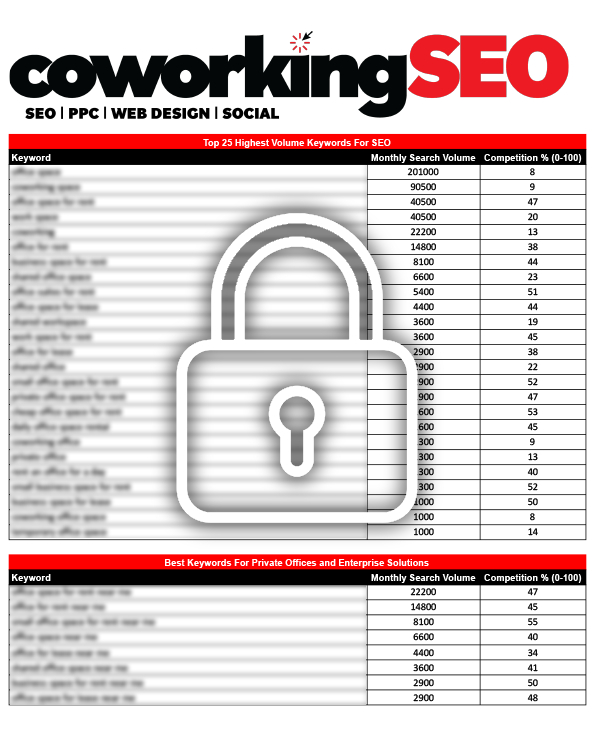Best Practices in Marketing
Many companies are looking for the best strategy to advertise commercial real estate to meet the challenges and opportunities that these uncertain times bring. The commercial real estate sector is no different.
The volatility of global financial markets has put a damper on even the best-case scenario of growth. Firms are reevaluating their advertising campaigns for commercial real estate to make sure they reach the right people, at the right time and in the most cost-effective way.
You can maximize your advertising budget by choosing the right channels to advertise your commercial real estate. This will help you reach a larger audience and also make it more targeted.
Being more savvy about how you advertise your commercial real estate can help take advantage of different benefits provided by different channels.
-
- Instant Access to a Large, Engaged, and Interested Audience
-
- Test different marketing messages and target profiles with ease and speed
-
- Track your spending and ROI with detailed analytics
How do you market commercial real estate in a world that is constantly changing?
Discover the five most important advertising channels you should know for your commercial listings. Learn why you should choose each of the options, as well as their audience profiles and ad formats. You’ll also get an estimate on pricing. As you plan your campaign, check out our post on great real estate marketing ideas for inspiration.

1. Advertise on Commercial Real Estate Listings Websites
The commercial property websites are at the top of this list. They allow you to quickly present your best properties to an audience that is already deeply involved in the evaluation and research process.
There are many options for advertising and pricing packages that can be tailored to your needs.
Why advertise on CRE Listings Sites
Online marketplaces for commercial real estate listings connect tenants and buyers to properties available for rent and sale.
You can allow your ideal prospects to search for available commercial spaces based on location, space requirements, and amenities.
Who is the target audience?
Investors, brokers, and tenants who are looking for commercial property for lease or sale can use CRE listing websites.
They are updated regularly and have a lot of content, so they will rank high in Google searches for specific location or amenity searches. This means that they will be seen by those who are interested in buying a home, but are still early in their purchasing cycle.
Common Advertising Format
The majority of CRE listing websites offer a mix of free and premium features, depending on the reach and audience. The majority of free plans have a limited time limit and offer minimal features to describe your properties.
Subscription Plans: These plans are based on your number of listings, location, number of users, or the number of leads that you expect to receive. The memberships range from single property plans to enterprise plans that are designed for brokerage offices and multiple agents.
Premium listings- Most listing sites allow you to increase the visibility of listings in their search results.
2. Advertise in Trade Journals
Trade journals for commercial real estate, such as Urban Land Magazine and National Real Estate Investor are read by CRE professionals. These journals provide the latest market insights, reports, and thought leadership articles. They are also a great resource for CRE professionals.
Why Advertise in Commercial Real Estate Trade Journals?
Trade journals have a specialized focus on commercial real estate. Advertise in trade journals for commercial real estate to reach a targeted audience of potential clients and business partners, while also promoting your brand.
Who is the target audience?
The audience of trade journals are professionals in commercial real estate who want to read about the latest trends in office space, retail, industrial and multi-family, as well as the impact that economic conditions have on the market. They also like to hear from industry leaders regarding their outlooks. The audience is a captive one for campaigns that are relevant to the industry.
Common advertising formats
There are many different options for advertising depending on the type of publication, the number and types of channels that they have, and the circulation. They include:
-
- Magazine/Journal Advertising- The cost will vary depending on the magazine’s circulation and placement. It can be anywhere between $500 and $10,000.
-
- Advertising in Newsletters- These sites offer newsletters where you can advertise or feature content between $600-$3,000.
-
- Website Advertising- Rates vary depending on the number of unique visitors per month. Prices start at $500, and can go up from there.
Our list of the most popular commercial real estate trade magazines includes a detailed description and advertising options for each.
3. Advertise on News Sites & Blogs
Many trade journals are available online, but they may be formatted differently from traditional commercial property blogs or news sites like Globest.com, The Real Deal or the commercial real estate verticals of Inc.com and WSJ.com.
Why Advertise on Commercial Real Estate News Sites and Blogs?
These sites, similar to trade journals, are designed to give professionals in the commercial property industry industry news and thought leadership. These sites feature the latest news, articles by industry leaders, and trends that are frequently searched. They also drive large numbers of visitors that you can target with your ads.
Who is the target audience?
Blogs and news sites tend to attract a more diverse audience compared to trade journals which target a very specific, narrow audience. A website such as The Real Deal may generate more monthly pageviews, but it could also include visitors who are not commercial real estate developers. Your audience is likely to include private investors, tenants, and researchers who are interested in the real estate market. CXX, ownership, EVP, SVP, and acquisitions-focused individuals tend to dominate the breakdown, with a small contingent of finance professionals and brokers.
Common advertising formats
-
- Advertisements – on a blog or news site is available in a variety of forms.
-
- Banner Advertisements – These are displayed throughout the website, either above the fold or in the sidebar – They can also be placed alongside certain posts. The size and placement of the ad determine the cost. This is then scaled according to the number of impressions you expect during the advertising period.
-
- Email newsletter – The majority of news and blog sites maintain a large email distribution list, and will offer opportunities for sponsored content to this list. The rates will vary depending on the quality and size of the list.
Sponsored content – Not all news or blog sites provide sponsored content. Think leadership with your company name, highlighting an area of interest to your audience.
4. Advertise with Google AdWords
Any business looking to generate online leads will be tempted by the world’s largest network of advertising. Google has more than 75% market share of North America’s search engine and the largest online display advertising system, which reaches more than 80% of Internet users worldwide. AdWords may be attractive to businesses looking to generate leads, but does it work for commercial real estate?
Why advertise on Google AdWords?
Google AdWords, the advertising platform, runs along with Google’s search engine results. The platform also powers video and display advertising on YouTube and millions of websites. Google’s advertising network is vast. Google’s ad network is extensive. It reaches millions of people worldwide and is available on desktops and mobile devices. Google is your best option if you’re looking to get people to notice your ads.
Who is the target audience?
Everyone. While this can be a very tempting option, it could also lead to an excessive and poorly targeted expenditure. Google’s text advertisements work by charging users for each click. They target specific keywords that people might use in a search engine. You can attract the wrong users to your site if you make it too broad. Google AdWords is easy to set up and run in under 10 minutes. However, for the best results, you need to fine-tune it.
Common advertising formats
-
- Google AdWords – offers two types of campaigns, each of which has dozens of options and permutations. These include:
-
- Google Search – Text ads above and below Google search results are bidded on per-click by advertisers. The amount that you will pay depends on the bid, competition, quality score, and relevance of your website.
-
- Display Ad Network – Google’s display advertisements appear on millions of websites, including Google sites like Google Finance and Gmail. They also appear on Blogger, YouTube, Blogger and Blogger. The network includes mobile apps and sites. You can choose from text, video, rich media, and image formats. You can also specify the type of site, keyword match, and demographics that you want to reach.
Both Google search and display ads charge based on the per-click model. For every click that you pay for you’ll receive at least 40 impressions. Cost per click can range from $1 for low-competition keywords to $50+ for CRE targets with high competition. To get the best results, you should first research which real-estate keywords to target.
5. Run Paid Social Media Campaigns
Commercial real estate social media marketing is a relatively new option compared to other options in this list. It can also be more challenging because there are so many options available. There are many networks where you can advertise. Each network also offers different types of advertising. How can you make the most of your advertising budget and reach the right audience at the same time?
Why Advertise on Social Media Platforms?
Social media has a number of advantages over other sources.
It is so ubiquitous that it’s hard to imagine anything else being as common.
LinkedIn is used by more than 133 million people in the US, including 41% of high-net-worth individuals. Facebook has 1.4 billion active daily users, of which 207 million are in the US. The majority of people you want to reach are on Facebook and LinkedIn. You can target them using the advertising tools available.
Who is the target audience?
The answer is almost everyone, just like Google AdWords. You can reach a large audience on Facebook or LinkedIn. The majority of adults use Facebook, and the majority of professionals use it.
Social media ads can be shown based on demographics and user interests. This is different from AdWords which relies on carefully selecting keywords. Facebook and LinkedIn allow targeting based on location, age, and interests, as well as company size and revenue. It is crucial to have this targeting power on both platforms if you want to succeed.
Common advertising formats
There are several ways to advertise on social media. As new features become available, new options will be made available.
-
- Infeed Ads — The most common form of social media advertising is the featured or sponsored posts.
Ads promote content on a company’s page to reach people beyond your network. This is important because Facebook only shows organic content for 10% of followers, and LinkedIn doesn’t do much better.
- Infeed Ads — The most common form of social media advertising is the featured or sponsored posts.
-
- Text Advertisements- LinkedIn lets you show text ads on the sidebars of their content. These ads target demographics, not search patterns, like Google’s text ads.
-
- Video Advertisements– Facebook and LinkedIn both have video advertising, with ongoing feature updates. Video ads can appear in posted videos and user feeds.
Social media advertising prices vary dramatically. Facebook is a good example. You can spend anywhere between $0.50 and $3.00 per click, depending on your target audience and engagement rate. LinkedIn’s cost per click tends to be higher but you get a more engaged audience.
Drive Success with Targeted Real Estate Advertising
You should evaluate your return on investment before increasing your advertising budget to generate new leads for your CRE company.
Join Coworking SEO Community today and Explore new options to market your coworking spaces like Coworking software and leads management







